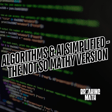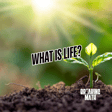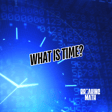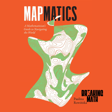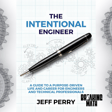Introduction of Dr. Destiny Nock
00:00:00
Speaker
Welcome to Breaking Math Podcast. I'm your host, Autumn Feneff. Today, we're joined by Dr. Destiny Nock, a professor of engineering and public policy and civil and environmental engineering at Carnegie Mellon University. Dr. Nock is also CEO and founder of People's Energy Analytics. Dr. Nock is a leading expert in energy justice, environmental justice, decision analysis, and the energy, poverty, climate change exists through her innovative use of mathematical modeling.
00:00:29
Speaker
She addresses societal challenges in sustainability planning, energy policy, equity, and particularly within electricity systems and other crucial infrastructure. Her current projects include creating a framework to assess the sustainability and equity trade-offs for power plant investments across the United States, and developing new measures of energy poverty to aid utility companies in identifying energy-limiting behaviors and low-income households. Join us as we dive deep into the intersections of mathematics, energy, and social good and explore how mathematical tools can dive more just and sustainable futures. Hi, Destiny. How are you doing today?
Dr. Nock's Journey in Energy Justice
00:01:11
Speaker
I'm doing great, Autumn. How are you? I'm well, thank you. So tell me a little bit more about your background. You're a professor and you're also a CEO of an engineering analytics company. How did that come about? You and I have known each other for a while, but when did you start doing this? Yeah, so I always joke with my husband and my students that For some people, busy is just a state of time in their life. And for others, it's a state of being. So I like to think that I've kind of always been an entrepreneur. When I was in high school, I started an earring business. And then in grad school, I had like, you know, some babies sitting on the side and a coat business as I was like going into grad school. And so now as a professor,
00:01:58
Speaker
I'm working in the energy space and I create algorithms which identify who is not using enough energy in their home, who's ah spending a lot of money on their bills, which could be putting them into financial hardship. And so then once I publish the paper about my algorithms and what we created, then we got a lot of utilities who were just super interested understanding one, what we did and then two, how they could integrate it into their operations. And that's when we said, okay, there is a business here. And we wanted to make sure that the utilities were using it in the correct manner.
00:02:43
Speaker
as well as making sure that the algorithms were actually identifying who we thought they were going to identify. And so that's when I spun out my research from Carnegie Mellon University into my company, which is People's Energy Analytics.
Sustainability Challenges in the Energy Economy
00:03:00
Speaker
And now we have just been ripping and running in both. So I still do create new algorithms through the research side. And then we operationalize those algorithms through the company side, and we have two utility customers, which I'm just super excited about. um And we just got back from presenting at the ah RE Plus conference in Anaheim, California, and got a lot of traction there. So I just feel like it's been nice to see the interest in operationalizing math that can help promote social justice.
00:03:35
Speaker
That is actually mind blowing. So a lot of the times we see people just running the numbers and people think of mathematics as you're doing a computation for something, but seeing this in action and how it takes place towards that push in public policy really makes the difference, right?
Energy Affordability and Policy Needs
00:03:54
Speaker
So out of curiosity, what are some of the most significant barriers and opportunities that you're seeing in the energy economy? so and The energy economy, I think that we're at a great time for understanding one, what are the sustainability challenges that we are going to face when we're implementing, you know, new power plants, retiring with power plants, but then two, you know, who are going to be impacted, you know, which populations are going to receive the most benefits, which populations are still going to be on the receiving and the burdens
00:04:27
Speaker
And the fact that we're having those conversations right now, I think means that it's a great time to be in the energy space because the energy system is in transition. We got to build more wind turbines. We got to build more transmission lines. We got to upgrade a lot of lines. Like not too long ago in New Orleans, there was that transmission line that got taken out by those high speed winds and the whole city lost power for a number of days and then in Texas, right, when we saw that winter storm come through and people were without power um for an extended period of time during the deep freeze. And I think that to me that now has highlighted the social impact that the energy system has, particularly when it doesn't work, right? And so now that is the big challenge, right? Like in the past, the energy system has not been built to work for everyone.
00:05:26
Speaker
Right. It was built in this hub and spoke manner where populations live near polluting power plants. Right. It impacts our water system. And then there are a certain reliability levels that, you know, more wealthier versus poorer populations experience.
00:05:44
Speaker
And that's going to be the big challenge moving forward. How do we make sure that the grid works for everyone? How do we make sure that people can afford their energy bills and that the energy system allows them to live a safe, healthy and comfortable life? I agree with that because even this summer living in New England, our energy bill before was maybe 200 bucks.
00:06:08
Speaker
Now a lot of households for a basic two bedroom house, ah no pool, AC running at a comfortable temperature is almost five to $600. Yeah. A month. A month. So it comes to the question, how do people ah afford that and what policies Can governments design for the effective balance in economic growth, sustainability, and social equity?
Using Data Analytics for Energy Patterns
00:06:42
Speaker
How can we put that into place? So with wanting to make sure that everyone can afford their energy bills and
00:06:50
Speaker
you know, live that safe and comfortable life. I think that, you know, first for the different types of bills, it really means that we need policies around housing quality and energy type. Because I remember when I lived in New England and I had natural gas heating, ooh, my bill was so nice in the winter, right? Like it was nice in the winter. It was very cheap, but the problem was we didn't have an air conditioner in the summer. So our energy bills were very low in the summer, but we had these infrastructure barriers because our house did not come equipped with an air conditioning unit. And then, you know, during a heat wave though, we were at risk. I remember getting heat illness. I had to take cold showers yeah just to not feel sick in the home. I think at one point it was like 90 degrees in my bedroom. It was hot. It's so it's so hot. And even even the pool, I know at my house, it was still like 88 degrees for some days with the pool. Yeah.
00:07:50
Speaker
Yeah, and so with that, you know, having technologies and using mathematics, so one, find people, but then two, you know, understanding what does it take to live a safe and comfortable life? One, how do we find those people, right? And so that's why we have the algorithms because using energy usage data, we can identify, are you not using that much energy? Do you have any air conditioner in your home? Like, are you putting yourself at risk during a heat wave or not?
00:08:20
Speaker
and then connecting people to assistance programs. I think that we need a way to make sure that utilities do that for all of their households because the utility is going to be the first point of contact when it comes to, are you using a safe amount of energy in your home? um And then two,
00:08:40
Speaker
Once we identify the people that need help, I do think that like having policies around bill assistance, housing upgrades, making sure that people live in high quality homes is going to be important.
Improving Housing Infrastructure via Surveys
00:08:52
Speaker
Because if you are in a house with a leaky roof, poor windows, bad insulation, then it will get very hot in your home, or it will get very cold in your home. and So one of the things that my recent paper in Chicago showed is that Low income groups saw their heat kick on um six to eight degrees earlier than high income households.
00:09:18
Speaker
and But the government actually did this wide-scale study. They did a ton of surveys. And we're actually seeing that people set their thermostats to around the same temperature. So even though you know low-income groups are setting their thermostats within one to two degrees of each other, we see low-income groups, their heating is kicking on you know up to six to eight degrees earlier.
00:09:42
Speaker
than a high income group. Now that's gonna lead to higher bills, right? That's just gonna lead to more energy usage and that has to do with poor housing quality. So I think that having policies around helping people with their bills but also helping improve the housing infrastructure is going to be very important um for minimizing those disparities between households. Absolutely. Now, what mathematical models and tools are you using to So we use a lot of regression analysis. We use statistics and optimization. um And I would say broadly it's math modeling. Yes. And decision analysis, but for the regression, I'll speak to that one because that's a more math intensive one for our breaking math podcast talk.
00:10:31
Speaker
um And for the regression, so what we do is we take the individual household and we map the energy usage um on a daily basis across the daily average temperature. um And then we will look for disparities within this regression. So one, we want to you know do some statistical tests to see are the differences between income groups statistically significant is something else besides income driving this like household size or number of people living in the home type of technology in the home the like racial demographics in the area or in the household right so then we run the regression to check to see if income is
00:11:15
Speaker
is the McKee driver, which often it is, and then we will use other statistical tests to look for differences within and across the income groups. Interesting. So with that, how does ah the data analytics help us find these patterns and trends?
Optimizing Energy Solutions
00:11:35
Speaker
within these groups. So I think the data analytics is best paired with the surveys and the community outreach that we've seen some other groups doing and I've done some of it too but you know when I've seen like these national surveys that ask people like are you spending a a large portion of your income on your bills that's that's one key question we see some there but then there's another one that asks people are you setting your home at an unsafe or unhealthy temperature. And when I saw that question, then it becomes, okay, well, how do I find these people, right? How do I find people that are setting their homes at unsafe and unhealthy temperatures? right And that's why now we connect the energy usage to outdoor temperature um in order to get a sense about like, when are people spending a lot of money on their bills versus when are people waiting until it's too long into a heat wave to do that?
00:12:32
Speaker
And so I would say whenever I'm thinking about the data and what are the algorithms, the first step is what is the abnormality or the thing in society that I want to identify? And here that was the unsafe and unhealthy temperatures. Then the next step from that is, okay, well, then what are the key variables that would help me understand, you know, is somebody using or not using energy during an unhealthy temperature? And that's going to relate to weather patterns, right outdoor temperature, indoor thermal loads, and then I would expect income to play a factor in that. And then from that, we'll do the regressions and then also see patterns. um So some right now we are exploring some machine learning model techniques. We're exploring some different like regression analysis techniques, but right now primarily we are bucketing them using our regressions and our data analytics.
Decarbonization Pathways Exploration
00:13:29
Speaker
Now, if we're going to optimize this, whether it's applied to energy systems to identify the most efficient and effective cost solutions, where are you looking? Whether it's going to be types of energy to help people with renewable energy integration, whether it's going to be grid management, whether it's going to be energy storage.
00:13:51
Speaker
How do you help identify these solutions for the long run? The energy solutions in the long run, what we will do, we will, one, look at the different interventions that you can have in the home, such as like weatherization, green roofs, a new appliance. um You can also upgrade the efficiency of the existing appliance. So we will look into those and then evaluate what do we think that impact will be on the actual bill and the energy usage in the home.
00:14:27
Speaker
um So I think that that is one method of looking at optimizing, right? Because you can, when ah when we're thinking about optimizing, we want to look at from the person perspective of the decision maker, right? And so in this case, the decision maker that I'm looking at for in the home is going to be the homeowner, the landlord, or the person applying for these programs.
00:14:51
Speaker
And so the question then becomes, okay, well, what is the thing that most people really care about? And it's most likely going to be the energy bill, not the rate that they pay per second or per minute or per hour, but probably the monthly bill, because that's when the money actually comes out of the account. Yes. And then from that, we will look at, okay, well, what are things that will affect that monthly bill and what are some different A decision point that they will most likely we look at and so that's how we look at like the technology types were green roofs or shading additions. We look at like, how much might that impact the amount of thermal load that will be in the home and. How much money they'll need to spend on their bills and then.
00:15:36
Speaker
for like, and then like, you know, how's that compared to like a rebate or a tax rebate or the money that they get from, from LAHEAP. I'm sorry, LAHEAP is the Low Income Housing Energy Assistance Program. Now with that, are you seeing disproportionate environmental burdens for certain communities? So we did do a national analysis where we looked at combining an optimization model with an air chemical transport model and then ah people impact assessment model. So three different, highly intensive models. So the first model, the optimization was looking across the US, where do we want to build power plants? And where might transmission come into play? And what's the final power plant mix going to look like? So then from there, then we got to estimate the pollution coming out of the different power plants. And then we're going to tie that to where we might settle using the air chemical transport model.
00:16:35
Speaker
So from that, then we look at where the particulate matter, NOx and SOx emissions are going to settle. Then from there, then we map that across different demographic groups, low income, high poverty, minority, and one other risk metric. And then from there, we'll see, okay, who is the most at risk? And we did find that the black population did have a higher air pollution burden from local air pollutants than the um
00:17:08
Speaker
non-minority populations.
Promoting Energy Literacy
00:17:10
Speaker
And so that then allows us to look across different decarbonization pathways to say, okay, given that there are different opportunities for decarbonizing, like, there's the 100% renewables by 2035 plan, the 100% renewables by 2050 plan, we could go low carbon, we could go following the Paris Climate Agreement, there's a lot of different plans.
00:17:34
Speaker
And so from that, we were able to say, okay, there are these decarbonization plans that can get us to net zero at different speeds, but which one is going to also help us reach social equity the fastest? Now, how can energy policies actually address these inequalities? So for how policies can address these inequalities, I do think that We need policies that not only look at improving the environmental sustainability of the power system, but also the social sustainability. So a lot of times I do hear politicians talking about, you know, which power system is going to help us reduce our carbon emissions the fastest. But it would be great if we can have policies that say,
00:18:28
Speaker
which polys which power plant mix is going to reduce the maximum amount of emissions in the most overburdened communities, right? So now we are combining environmental sustainability with social sustainability by saying we're not just going to at, on average, where should we go, but let's go to the worst off community, make the energy system in that place better first. Okay, we fixed that one. Now let's go to the next community and let's make that one better. And so if you're always working towards whatever community is the worst off one,
00:19:12
Speaker
It will eventually mean that everybody's quality of life has been raised above a bar. Interesting to see that because I know that there's a lot of of challenges with these government programs being implemented in certain areas, whether it's assisting low low income households, because for some people, it's just transfer of information, right?
00:19:36
Speaker
And it's how do we know what's available to us if we're a low income household? And how can a lot of these systems have that transfer of information and these programs be improved? I think that the transfer of information needs to be more targeted. It's a challenge because, you know, they might be using YouTube videos or ah social media or even billboards, for example.
00:20:06
Speaker
And that requires you to interact with some of those sources at the right moment in time. Yes. To see that message. And then that message has to come to you at a time when you would actually do something about it. Right. And I think that it can be a challenge with those blanket marketing campaigns because we're all so busy. We get this flood of information every day.
00:20:32
Speaker
and it might not stay in our brain. So that's something that applies to us down the road. So what my company does is we do try to tackle that problem by doing more targeted marketing based on what specific program would improve a person's situation from an energy standpoint. um And that's what we've been working towards because Having a targeted marketing, like if, if I got something that said, Hey, look at this program and may or may not apply to you, I might look at it. I might not. But if I get something else that says, Hey, you're pre-qualified for this program. Now I'm more likely to look into it because it's a lower barrier of entry than something where it's just like, Hey, consider this. It might look good. Right.
00:21:22
Speaker
Now, that really comes with education and public outreach programs, right? So how how do we promote that energy literacy and empower the individuals to make informed decisions, of whether it's with energy use and consumption, or if it's even to have something like improving the windows in your house. I think that breaking it down into language that people care about is so important. I mean, even as math professionals, right, it's one thing to say, you know, if the slope of the temperature line but falls below 0.1 kilowatt hours per degree Fahrenheit,
00:22:11
Speaker
then a person probably doesn't have an air conditioning unit. It's another thing to just very simply say, hey, if you're not using that much energy as you move into a heat wave, I know that you probably don't have an air conditioner. I said the same thing, but the second one had a lot less jargon in it. And yes, I took out the math, the slope, right? The math terms out of it, but it does mean the same thing.
00:22:37
Speaker
And I think that energy literacy, it's one the professionals as much as it is on the homeowners and the renters, right? And the people who would be on the receiving end of these benefits to just make the communication easier, right? We got to get better at meeting people where they are. And so, you know, I've even seen things that say, Hey, are you in arrears sign up for this program? Well, arrears just means are you behind on your bills?
00:23:05
Speaker
Are you, do you have unpaid energy bills? Right. That's the easiest way to say it for the random person on the street. Right. Because some people wouldn't understand what a rear is. Yeah. Yeah. Some people but don't know what arrears are. Right. Especially people who had never been in them before. Correct.
Health Risks and Policy Advocacy
00:23:25
Speaker
Um, and so then it becomes this challenge to make sure that we're always talking in a way that people can easily understand and then meeting them where they are. Now, when you're meeting people where they're at with energy, with all of these variables that take into effect, whether it for energy equity, what are some of the health implications of energy production?
00:23:52
Speaker
consumption, whether it's pollution, how can these risks be mitigated? So when um if you live near a polluting plant, you're more likely to have asthma, respiratory illnesses. I mean, that mainly comes from the particulate matter that's being emitted from the plant. So particulate matter are these little particles. They flow through the air. Eventually, they come down. They sink in. And then we can breathe them in. They get into our lungs. It makes it harder to breathe. um And it affects It affects a lot of people, young people, elderly, everybody in between. So as we are working to make the energy system more environmentally friendly, reducing those negative health implications are going to be very big. Because again, like the way that emitting power plants are used, like as they are retiring over time, that should make the air cleaner, right? it should
00:24:49
Speaker
make it easier to breathe in, hopefully reduce those cases of asthma and premature mortality in humans slash young people. And then on the other side, like, so for so that's more like the supply side, but if we're looking at the residential level, then, you know, there is this other challenge of like, if you feel like you're not able to use enough energy, even just in your home.
00:25:14
Speaker
Right. So if you're not able to keep your home warm, if you're not able to keep your house cool in the summer, in the winter side, if you're not able to keep your house warm enough, then you could see your pipes freezing, lose access to your water supply. Right. That then has a host of hygienic issues as well as psychological stress. um And not to mention like hypothermia in the, in the winter and then in the summer.
00:25:41
Speaker
We see like lack of air conditioning use, especially with the heat waves being tied to heat illness and heat stroke. You can become dehydrated. You might faint, get a concussion. right like These are things that are going to be more prevalent in the summer. Now, how can, whether it's countries or even local a government, help address the global energy challenges and promote sustainable developments?
00:26:10
Speaker
So that, that comes not only with just the health implications, but we're looking at like a larger impact scale. So with that impact, I do think having targets and commitments that we actually stick to is going to be so important. Will it happen?
00:26:26
Speaker
I know that's the question. Will it happen? Especially because these commitments are voluntary. Right. I think that the biggest challenge with the energy system is a lot of times we talk about it as if it's one giant system, but it's not. It's six systems, at least in the US. You have ISO New England, California, ISO, you have ERCOT in Texas, you have the Midwest ISO, you have the Southwest Power Pool, sorry, Southeast Power Pool, and you you just have a host of then municipalities as well. And it's not just one largely integrated system. It's ah a bunch of systems that have a a small amount of interconnections between each other. So from an international perspective,
00:27:13
Speaker
you know, you're going to want to have like commitments from each other and stick to those commitments. From a national perspective, I do think having policies that incentivize like tax credits for renewables that actually last for more than three years, because it takes more than three years to build renewable power plants, right? And you need industry to come in, like we're now seeing that the Ira and the like inflation, sorry. We're now seeing that the Ira, the inflation reduction act and the infrastructure bill, like they put in some things in place to incentivize manufacturing to come into the US. And I think that those things are going to be severely needed um as we move forward with energy transition, because you got to get the capabilities to produce more renewables like in the US, like that will also make it more feasible.
00:28:12
Speaker
Now you talk about producing more renewable energy. With our current infrastructure, how does that really shift? ah the cost of energy for resources. So with our legacy infrastructure, I mean, there are some power plants where they have power purchase agreements with certain utilities, and that will influence like um that will influence like the amount that the utilities have already committed to pay um to these power plants over time. And there was going to be a cost of breaking that power purchase agreement.
00:28:50
Speaker
But I do think that a lot of the companies, like a lot of, I do think a lot of the power plants have already surpassed some of their power purchase agreements, like with nuclear, for example, a lot of them in the US are over 40 years old, usually power purchase agreements were 20 to 40 years. So um nuclear is a very high energy dense base load that can make it cheaper. So now we have like wind and solar, which they are very cheap, um because they don't they have zero fuel cost. But there is still a capital cost to build them. And so then the question becomes like, how much energy are they able to supply and once they're able to
00:29:35
Speaker
replace these base load technologies, I do think that the cost can stay low. It's just going to be in that in-between time when you need some more of your high cost natural gas plants to supplement some of the wind and solar if we retire nuclear to that we might see some rises in prices, but I think as wind and solar come um online more and they're able to replace some of those base loads, we might see the cost fall again.
00:30:04
Speaker
Will we see it in our lifetime? Hope so. Maybe 20 years. I don't want to pay for high bills. and Neither do I. Yeah, I don't want to pay super high energy. Right. But we also have to think of the ethical considerations of this being taken into account. So whether it's developing and implementing energy policies,
00:30:25
Speaker
What impacts are we going to have on future generations when you're developing these models and policies? For future generations, I would say that the impact is that the energy system will get cleaner over time. Like we're already seeing that it is getting cleaner, particularly, I mean, the energy system started off as primarily dominated by fossil fuels. We had a lot more coal. Now we're seeing a ton more natural gas. Renewables are falling in cost, um which I think we will see more of them come online. um And then of course, hydro plays a big role. So I think that I am hopeful with the technologies coming on that we will continue to see
00:31:09
Speaker
the fall of carbon emissions and the fall of local air pollutants. Now, which future generation is going to have the 100% renewable energy power system that is yet to be seen? I mean, I know that there's a ton of studies out there that say it is possible by 2050. And I like the optimists. So I would love to see if that can come to fruition. But the realist in me says I think it might take until like 2075, 2080 just at the speed of the transition to see like 80% renewable energy in the grid. Because I do think that that last, the last 20% is going to be the hardest because
00:31:56
Speaker
that is going to take a radical shift in people's willingness to accept transmission lines, people's willingness to accept brownouts or blackouts during mismatches of supply and demand. And I think that that will will require a social shift.
Job Creation in Renewables
00:32:12
Speaker
Now, with that social shift, we know that our economy will also grow and there's going to be some sort of job creation, right? So particularly in rural areas and disadvantaged communities, there will also be some sort of economic growth. Where do you see this taking place? so and nice In terms of like the job growth, I do think that there's going to be a big amount of job growth in the Midwest, as we've already been seeing, just due to the number of wind turbines that are out there. I do expect to also see some job growth along the coasts.
00:32:49
Speaker
Because you know we're talking about offshore wind technologies, we're building out that capacity. New York had one come one online recently. And so I do think that there will be some offshore wind jobs created in that sense. Now, in terms of.
00:33:07
Speaker
like solar manufacturing. I mean, it really depends on who wins the bid, like what state is going to win the bid to bring solar manufacturing into there. So that's yet to be seen. um But at least for wind, I think that the Midwest, ah middle of the country area and the coast, we could see some more job creation.
00:33:27
Speaker
How can energy policies balance the needs of agriculture and other sectors while also promoting sustainability? We're looking at land use, reducing greenhouse gas emissions. How can that benefit the energy economy? I think the most exciting thing I've seen with agriculture and energy use is the ability of renewables to add a wealth creation to agriculture.
00:33:54
Speaker
For example, I was at the RE Plus conference, which is, you know, a huge renewable energy conference. And there were like, sheep grazers grazing in between solar panels. So that was a very nice, I think, use case for animals going between this energy technology, offers them some shade, the energy produced, and then they're able to just eat the grass and the weeds that are growing between the solar panels. It makes it easier to also maintain the panels. um So I do like seeing combinations such as that. I've also ah seen um ranchers potentially who would have, um you know, renewables on their land around cows, sheep,
00:34:42
Speaker
alpacas and I think that that provides a nice opportunity. I think that there are some that have talked to about like growing crops in between the solar but I know that that also becomes a bit of a challenge just for harvesting the crops because you got to get the machines through there so I think like I've seen more livestock agriculture um kind of working alongside solar panels and wind turbines. So I think that that provides a nice opportunity for another revenue stream in addition to the livestock angle or the agricultural angle. Also seen some of the solar panels being built with beehives in them. Pretty cool. So a lot of the wildflowers in the farmer's fields have actual beehives every so often.
00:35:36
Speaker
in the panels, and they'll try to do as much wildflowers, so you can actually have more hives. more i love smart and Yeah, that's really smart. Yeah, I think like this, like, you know, multi use of land is so important. Because you do want to make sure that just You can maintain biodiversity, right? You're supporting the energy system, especially because renewables do require a lot of land, right? And that is why you know being able to put solar panels on your roof is so nice, right? Because the rooftop because the rooftop is such an unused space currently.
Household Energy Bill Reduction Tips
00:36:21
Speaker
Right. Now, what are some things that the everyday person can do to reduce the cost of their energy bills?
00:36:30
Speaker
So we're thinking about basic energy analytics, but how does that translate right down to the home? So for the everyday person, um one thing that they can do to help reduce their energy bills is get blackout curtains.
00:36:45
Speaker
Now blackout curtains are so useful for um making sure your home doesn't get too hot during the hottest time of the day, but they also can um provide insulation in the winter to make sure you're not losing too much heat um through those windows. So I think that that's going to be one thing. And I'm not talking about some curtains that say like light blocking. I'm talking about legit thick blackout curtains like you close those things and if the lamp wasn't on it's dark in your house and those have been the most useful in terms of reducing my energy bill because again the heating and air conditioning system is really going to drive that energy bill. I believe that I saw a report not too long ago that said 40 to 70 percent of your energy bill comes from your heating and air conditioning system.
00:37:38
Speaker
And so when you think about what is going to affect your bill the most, it's going to be your thermostat set point, how often you're running your window units, right? That's going to be what's really driving the energy bill. And so making sure that you do things to reduce the thermal discomfort in your home that you're experiencing and how much you have to turn on your thermostat, your heating, your conditioning unit, that's going to really help reduce the energy bill. um I remember I went to one of my tenant's houses because they were saying their home was not getting that warm, like their heating was running all the time, but the house wouldn't get above like
00:38:23
Speaker
I think it was 62 degrees. It was pretty cold in there when I went in. And I just said, OK. And we had just recently bought the house like from the landlord. It had only been about two months since we owned it. So we went in there, and I was like, OK, yeah, it's cold. So we went in. We sealed up all the cracks in the doors. There was like a window that wasn't properly closed. We went and closed that. And we saw the house rise to like 65 degrees. so And I were like, okay, three degrees difference. It still made a difference, but we were like, okay, what else can we do? So then we went into the basement and what did we find? Open windows all throughout the basement. And I was telling her, I was like, you really should close these. And apparently they had left them open because there had been some mold down there. So they were trying to air it out.
00:39:15
Speaker
And nobody had remembered to close the windows. So we went down to the basement, we closed all the windows. There was even a broken window. I had foamed it shut. Yep. And then we go back upstairs and now it is 68 degrees. So now that increased it by five degrees just in such a short period of time, which is huge. Yeah, it's huge. And it felt I mean, if you've been in a 62 versus 70, it feels much nicer at 70.
00:39:42
Speaker
And so that like made a huge difference. But again, like feeling up the cracks in your house, right? Blocking out those windows, that's going to lose a lot of energy and a lot of heat.
Math for Social Justice Advocacy
00:39:55
Speaker
um And so that can make a big difference. Definitely. um Out of curiosity, is there anything that you would like to add?
00:40:04
Speaker
or think that people should know as a big takeaway. So in terms of what people should know as a big takeaway, I think that whenever we are wanting to see what's the impact of a system on a community or people getting as close as possible to the household level is very important. Now, there are data challenges that are going to be related to that because household data is often proprietary or private data.
00:40:32
Speaker
But the closer you can get to the people that you want to impact is going to be super important. And I think that that's how we can use math to really advocate for social justice. So first, it's going to be about finding the disparities. But then the next thing is going to be about, well, what does it actually take to live a high quality life? And what is that bar that we're hoping people can achieve? And then they'll be about making another model to say, OK, how close or far are people from that bar? Great.
00:41:02
Speaker
Thank you so much for coming on the podcast. Yeah. and Thank you so much for having me. It's been awesome.


